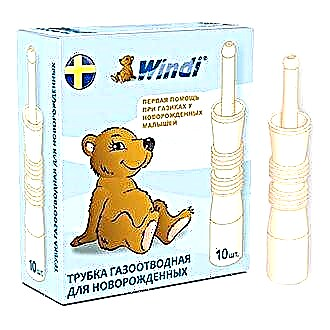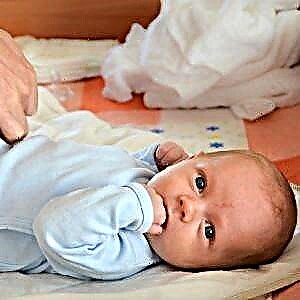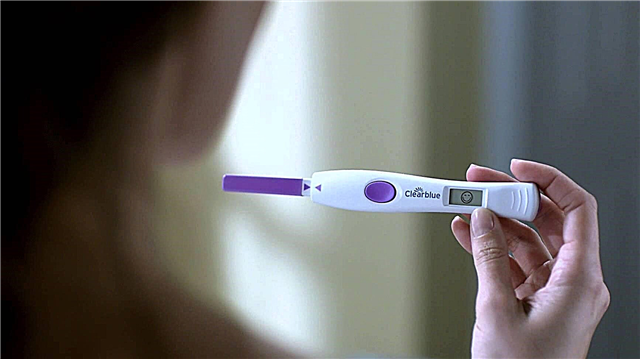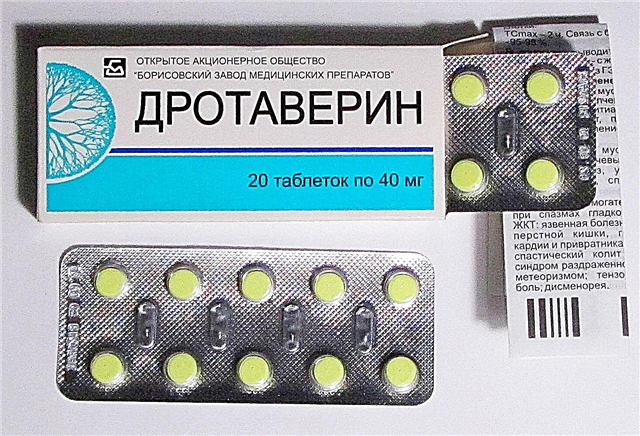Parents of newborns are often faced with colic in the tummy. The kid is worried, screams, and therefore the peace of all family members is disturbed. An indispensable assistant in this case will be the gas pipe, thanks to which the night will be really calm. In this article, we will tell you when it is necessary to use a gas outlet tube, what types of tubes exist and how to use them.
Indications for use
At birth, the baby's organs and systems are anatomically immature. In the first weeks of life, the intestine of a newborn begins to be populated by the microflora involved in digestion, and the motor function of the intestine starts up.
During this period, the baby especially often may experience stool retention and flatulence. The accumulation of air in the intestinal lumen causes discomfort in the child, he worries, cries - this is intestinal colic.
Colic can be prevented, and there are several methods for this:
 Laying out the baby on the tummy before feeding.
Laying out the baby on the tummy before feeding.- The correct diet is the amount of food that does not exceed the age norm, with the necessary sustained interval between feedings.
- Tummy massage. Stroking your mother's hand around the navel clockwise. Tactile stimuli will enhance intestinal motility, which will help to quickly remove excess gas.
- Warming the tummy by applying a warm diaper. The heat will relieve the intestinal spasm and help the accumulated gas escape.
- Gymnastics of the newborn. The normalization of gas emission is facilitated by exercises with bringing the baby's legs to the stomach.
- The use of medicines for newborns that reduce gas production ("Beybikalm", "Bobotik", "Plantex", "Sub-simplex", "Espumizan").
The installation of a gas outlet pipe is an extreme measure and is necessary only if all these measures have already been taken, but a positive effect has not been achieved.
Symptoms requiring the use of a gas outlet tube:
- stool retention for several days;
- restless behavior, excitement of the child, prolonged crying of the baby;
- decreased appetite, complete refusal of the child from food;
- the abdomen of the child is sharply swollen, the anterior abdominal wall is tense.
Contraindications to the use of a gas duct for newborns
Not every child can have a gas tube. Therefore, it is always better to consult a pediatrician before using it, who will give the necessary recommendations or show how to insert the gas outlet tube.
The installation of a gas outlet tube is contraindicated in the following conditions:
 cracks in the anus;
cracks in the anus;- infectious diseases of the child;
- inflammatory diseases in the anal area;
- intestinal bleeding.
How to choose a gas outlet pipe?
There are several types of venting devices, from a standard vent tube to modified catheters. You can buy them at every pharmacy. Parents can choose a gas outlet tube for a newborn, at their discretion, choosing the quality and price convenient for themselves.
- Reusable gas outlet for children. It is a non-toxic elastic rubber tube with holes on both sides. The end inserted into the rectum is rounded. There are several sizes of tubules, depending on the age of the babies. Immediately after birth, products of the 15th - 16th number are used, in the future it is necessary to purchase larger tubes (17 - 18th numbers). Regardless of the product number, its diameter should be 2 - 3 mm, and the length should not exceed 22 cm. The average cost of such a tube is 60 rubles. The product is convenient in that it can be used several times, the cost is pleasantly pleasing. The disadvantage is that the tube must be boiled before the procedure and it does not have a marking of the insertion depth.
- Apexmed rectal gas outlet tube for newborns. This is a sterile disposable probe. The end of the tube, inserted into the rectum, is rounded, which reduces the risk of injury, the free end is wide with a plastic tip. It is made of materials of the highest safety class, which soften when heated inside the intestine, which also reduces the risk of damage to the mucous membrane. The probe is marked with a size in centimeters, which allows you to control the depth of insertion. There are also several sizes of probes, depending on the age of the baby. The price of such a product is from 200 to 400 rubles.
- Windi gas outlet tube for newborns. Sterile rubber exhaust tube for single use. The tube is small and has the shape of a catheter, which eliminates the risk of traumatic injury. Made of thermoplastic elastomer, which, when in contact with the human body, heats up quickly and becomes softer. Windy's catheter is very convenient and easy to use; it has a restrictor that allows you to insert the tube to the required depth. The release of gases will be accompanied by a characteristic sound. Its downside is that it is a disposable catheter and has a high cost relative to similar medical products. The cost is about 1000 rubles for one package (10 pcs).
Gas outlet pipe
How to put a gas tube in a newborn?
At the sight of this device, young parents often panic, the question arises of how to use the gas outlet tube. It is great if the first time a visitor or local doctor shows you how to use the tube. But even if you are left alone with the gas outlet pipe, do not worry.
The product comes with detailed instructions for use, which will tell you how to properly use the flue gas pipe.
The most important thing is to calm down and carry out the procedure in a calm environment. If the mother feels insecure and worried, the child will also worry.
Preparation for setting the gas outlet tube:
- check the quality of the product. The gas outlet for newborns should be made of soft elastic materials, without manufacturing defects;
- the size of the product must correspond to the age of the baby;
- before use, the reusable catheter should be boiled, and when using a disposable tube, make sure that its sterile packaging is intact.

Rules for using the gas tube for a child:
- Before starting the procedure, you must wash your hands.
- The baby should be laid on a flat solid surface, having laid a pre-clean diaper.
- Baby's position: on the back, legs bent at the knees and brought to the tummy.
- We hold the child with one hand, and with the other we take the catheter closer to the rounded end.
- The end of the catheter inserted into the intestine is lubricated with oil or petroleum jelly.
To reduce injuries, the skin around the anus of the baby should also be lubricated with oil or baby cream.
- In a circular motion, the rounded end of the catheter is inserted into the anus. The insertion depth for infants up to six months is up to 2 cm, for older children - up to 4 cm. Before starting the procedure, you can mark the required depth on the tube.
If the child is worried and you feel an obstacle in the introduction of the tube, you should not make an effort. It is necessary to calm, distract the baby and repeat the introduction of the tube only after he has relaxed.
- In order to understand whether gases are escaping or not, it is necessary to release the free end of the tube into the water and watch for the appearance of air bubbles.
- After stopping the discharge of gases, remove the inserted end of the tube with gentle rotary movements. Do not abruptly remove the tube so as not to cause discomfort to the child.
In order for newborns to completely rid the intestines of gas, the catheter must be kept for 10-15 minutes.
To speed up the process, you can massage the baby's tummy, stroking the front abdominal wall around the navel clockwise.

Gently twisting the catheter in the rectum will stimulate the bowel and help the baby to empty after removing the gas tube. After the procedure, you need to wash the baby.
Throw away the disposable straw after using it. Reusable straws should be thoroughly rinsed in running water using baby or laundry soap. Before reuse, it will need to be boiled.
How often can the flue pipe be used?
Re-introduction of the gas tube can be carried out at intervals of at least 4 hours. The mucous membrane of the baby's rectum is very delicate, and bedsores can form with prolonged catheter standing. Avoid placing the venting tube more than twice a day.
Do not use the flue gas tube too often. If the child is constantly worried about bloating, flatulence, it is necessary to consult a doctor to determine the cause of digestive problems.
Main conclusions:
- The placement of a gas outlet tube for a child is indicated for colic, bloating, flatulence.
- Before installing the gas outlet tube, it is necessary to read the instructions in detail and check the suitability of the product.
- Placing a gas tube is a procedure that only temporarily relieves the condition of the child. You should not abuse its use in order to constantly help the baby to release accumulated gases. If there is a too frequent need for this, you need to contact a specialist to find out and eliminate the cause of the digestive disorder.
Article rating:

 Laying out the baby on the tummy before feeding.
Laying out the baby on the tummy before feeding. cracks in the anus;
cracks in the anus;

